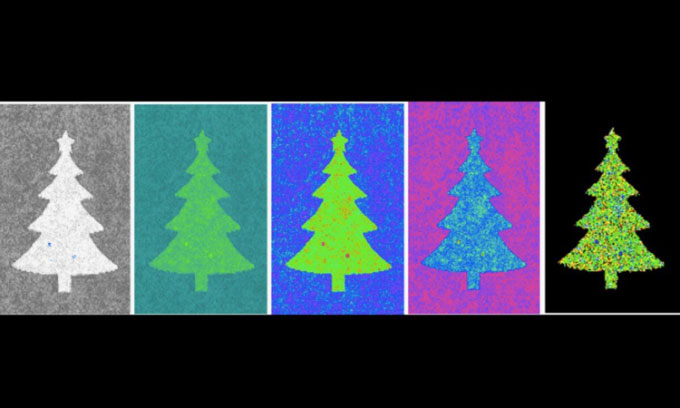Danish Scientists Create a 14 cm Tall Christmas Tree That Is Only 1/3 Nanometer Thick from Graphene Material.
Several years ago, a group of Canadian scientists celebrated Christmas by creating an ultra-small gingerbread house. This year, Danish scientists are marking the holiday with a different approach: they have created the thinnest Christmas tree in the world from graphene material, as reported by New Atlas on December 24.

Different versions of the Christmas tree are only one atom thick. (Photo: Jie Ji).
Graphene is a single layer of carbon atoms arranged in a honeycomb structure, with a thickness of just one atom. This is the thinnest and strongest artificial material in the world, which is also an excellent conductor of electricity, heat, and moisture. These characteristics make it useful in various applications, such as batteries, electronic devices, and high-strength composite materials. However, a significant challenge remains in ensuring good quality when produced at a commercial scale. This is why the tiny Christmas tree was created.
The tree measures 14 cm in height and is only 1/3 nanometer thick (a nanometer is one billionth of a meter), crafted by a team of experts at the Danish Technical University (DTU) from a 10-meter-long roll of graphene. First, they “grew” the graphene on a reusable copper foil, then lifted the graphene off the copper and placed it onto a low-cost polymer roll for easier handling and storage.
This method of producing graphene has been accepted for a long time, but it remains challenging to verify whether the graphene truly retains all its properties when transferring from one roll to another. The DTU scientists addressed this issue by using terahertz radiation, which is considered harmless at low doses.
Specifically, when graphene is transferred to the polymer, it must first be exposed to terahertz radio waves, after which it is scanned to see how much terahertz radiation it has absorbed. The absorption capacity of graphene corresponds directly to its electrical conductivity. Therefore, if the scan data shows that the graphene absorbs radiation uniformly, it indicates that it is of good quality.
“The Christmas tree prank contains an important breakthrough. For the first time, we have succeeded in directly controlling the quality of the graphene layer during the transfer process. This is key to achieving stable, reproducible, and usable material properties, which is a prerequisite for using graphene in devices, such as circuits,” explained Professor Peter Boggild at DTU.

















































